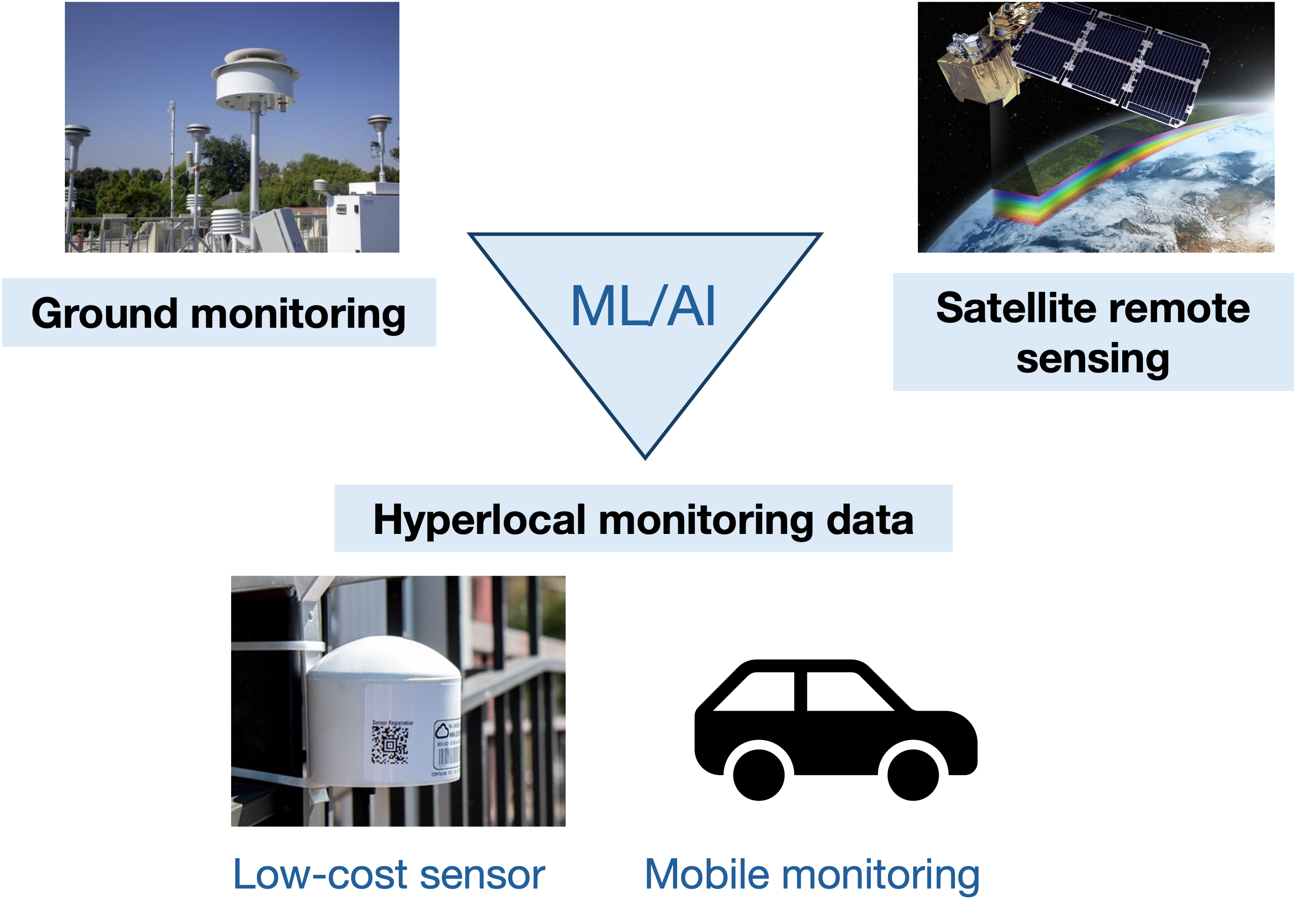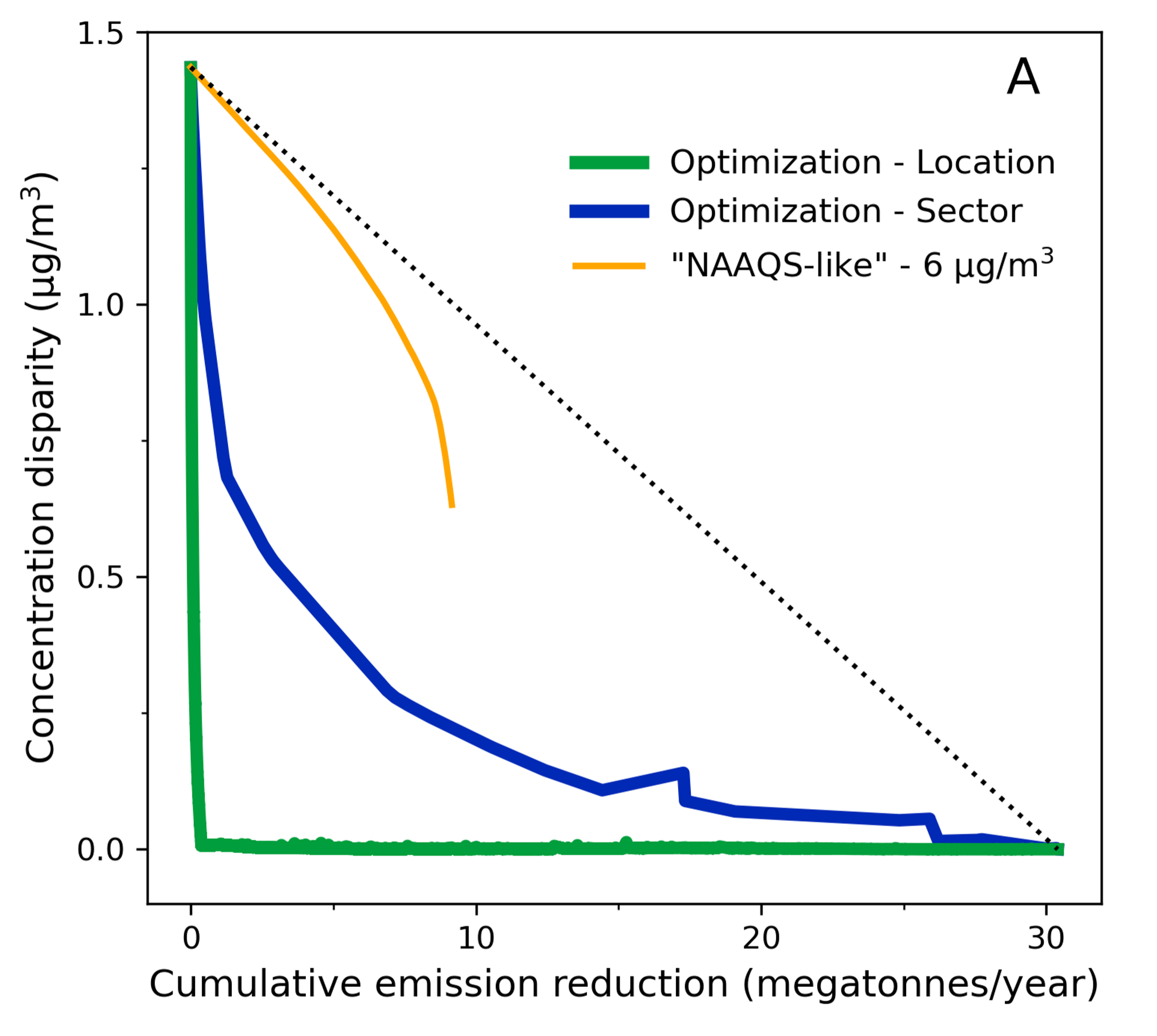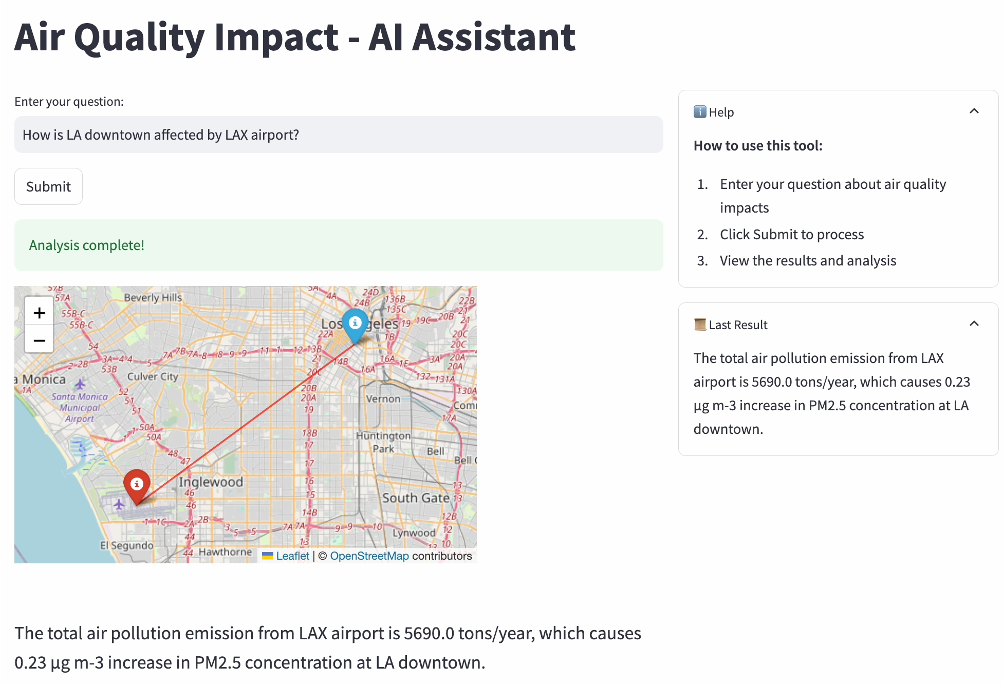Air quality model development

We develop both conventional numerical models (e.g., CMAQ) and reduced-complexity models to predict air pollution concentrations from emissions. For comprehensive photochemical models, we add new chemical mechanisms to model new species. We also use data-driven approaches to develop reduced-complexity models, which are computationally efficient, to assist scenario analysis and solution optimization better. Additionally, we incorporate machine learning techniques to reduce the biases in models and emission inventories. The new models can be used to quantify source contributions, air transport, and health burdens from emissions.
Fine-scale air pollution mapping

We aim to predict air pollution concentration at high spatial-temporal resolution using data from satellite remote sensing, low-cost sensors, and other sources. Data from multiple sources can provide better spatial and temporal coverage at fine scales. The fine-scale pollution mapping can better quantify human exposure to ambient air pollution.
Policy solutions for air pollution exposure

We leverage photochemical models, reduced-complexity models, and fine-scale pollution mapping to evaluate regulatory, monitoring, energy, transportation, climate, and other emission-reduction policies aimed at reducing human exposure and associated health impacts. We aim to not only identify or quantify the issues but also investigate actionable solutions to assist decision-making. Our research projects have gained attention from scientific communities and government agencies and have garnered coverage from prominent media outlets, including The New York Times, Associated Press, The Washington Post, and National Public Radio.
Risk communication using AI

We employ large language models in air quality risk communication to the public. We aim to develop air quality AI agents to visualize emission contributions and source impacts, as well as to quantify health burdens.